|
Click on any illustration with colored border to see it full size. Then click on "Back" button to return to this page.
Torun, founded in the 13th century as a fortress, because of its key position on the river Vistula, quickly became a center of trade for the region. Torun is one of the few medieval Polish cities to have survived recent wars without damage, the walls along the river bank remain till today, virtually unchanged for 600 years.
|
|
One of the many towers tilted because of faulty foundations and is called the Crooked Tower. One of the larger gates used to lead to a bridge across the river Vistula, seen behind it. Gothic granaries still exist to remind us of the trade that brought wealth to Torun.
|
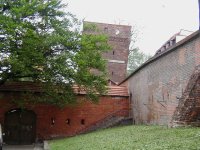

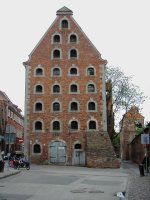 |
|
The Old Town Market ( Rynek Staromiejski) is surrounded by imposing, decorated mansions, but is dominated by the Town Hall built in the 14th. century. At one corner you can glimpse the towers of the 13thC Church of the Virgin Mary. The blue 17C baroque Palace of the Kujawy Bishops is in a street close by.
|
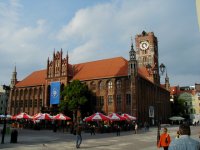
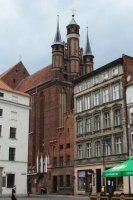
 |
|
The Town Hall houses a museum full of art and artifacts from the city's rich history. These include seals, tools and emblems of the medieval Guilds, doors and furniture made from richly decorated woods and stoves decorated with tiles, some imported but many of local manufacture.
|
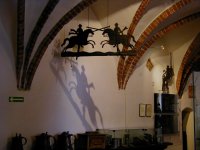

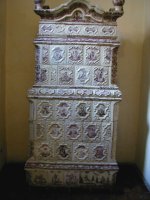 |
Copernicus was born in the 15thC. house of his father. It is now a museum devoted to the work and life of the astronomer who determined that the earth is not the center of the universe.
A whimsical fountain next to the Town Hall recalls the fable of the fiddler who saved Torun from a plague of frogs.
|
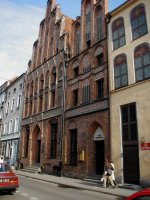

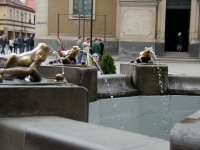 |
|
Like most old city areas in Europe, the center of Torun is a 25 block pedestrian mall. Broad Street (Szeroka Ulica) leads from the Old Town Market to the New Town Market which was established in the 14thC outside the walls. Here a 15thC inn "Under the Blue Apron" has surved its patrons over 500 years. The brick Gothic 14thC St.James church towers over it.
|


 |
St. James, the New Town's parish church, is remarkable for the well preserved wall and ceiling frescoes. At one of the side altars you can see a very unusual Crucifix. The cross has 12 side branches, each representing an Apostle.
We continue our walk returning to the old city walls.
|
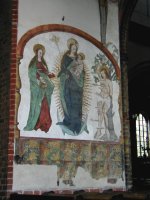
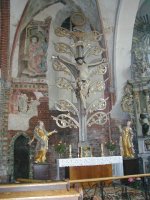
 |
